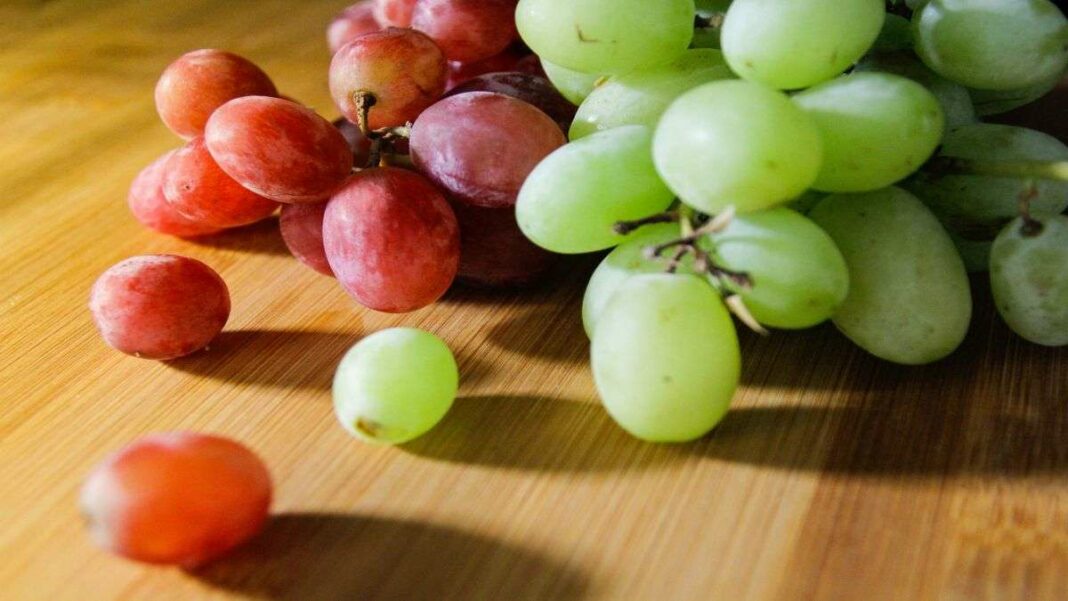Table grapes are a delicious and versatile addition to meals, perfect for snacking, salads, or cheese pairings. They are nutritious, rich in vitamins and beneficial plant compounds, though the presence of sulfur from pesticides warrants caution. While red and blue grapes offer more health benefits, all varieties can enhance a balanced diet. Eating grapes with seeds can aid digestion, and smoothies are a great way to incorporate them into breakfast for a nutritious start to the day.
Enjoying the Harvest: The Versatility of Table Grapes
Table grapes are currently in season, making them a fantastic addition to your meals. Whether paired with cheese, tossed into salads, or enjoyed as a quick snack, these fruits are so delicious that many find it hard to resist finishing the entire bunch in one sitting.
But how nutritious are grapes? Are dark blue grapes more beneficial than their green counterparts? Should you consume the seeds? And is a grape-only diet a sensible choice?
Additionally, have you ever noticed a peculiar musty odor lingering on your hands after handling grapes? This scent is a result of sulfur, a common pesticide used in grape cultivation, which helps preserve the delicate fruits during their journey from vineyards to your kitchen.
Sulfur on Grapes: What You Need to Know
Is sulfur harmful? According to Dr. Johannes Georg Wechsler, an internist and nutritionist based in Munich, the health implications of pesticides like sulfur are still being studied. He is the president of the Federal Association of German Nutritional Physicians (BDEM) and advises caution. Grapes are known to retain traces of various pesticides, with reports indicating that more than ten different types were found in 2019. However, as long as the residue levels comply with safety standards, they are generally considered safe to consume.
Dr. Wechsler suggests that a sulfur concentration of one gram per kilogram of grapes is typically harmless. Sensitive individuals might experience allergies or asthma symptoms. To mitigate any concerns, washing grapes thoroughly under warm running water can help remove the sulfur residue and reduce any lingering odors on your hands.
Grapes: A Healthy Snack or Not?
Beyond their delightful taste, grapes are packed with fiber and fruit acids, promoting digestive health. “Grapes are rich in vitamins, including B vitamins like folate,” notes Antje Gahl from the German Society for Nutrition (DGE). They also provide a good source of potassium, calcium, phosphorus, magnesium, iron, and beneficial plant compounds that possess anti-inflammatory properties.
When it comes to seeds, consuming grapes with seeds is beneficial for healthy individuals. “The tannins and fibers in the seeds aid digestion,” Gahl explains. However, those with specific intestinal conditions may need to opt for seedless grapes, so consulting a healthcare professional is advisable in such cases.
Eating the seeds allows you to absorb their health benefits. Alternatively, incorporating high-quality, cold-pressed grape seed oil into your diet can provide similar nutrients while also serving as a natural beauty product.
Choosing the Right Grapes: Color Matters
Grapes come in various shades, from dark blue and red to yellowish and light green, each affecting taste and nutritional value. Dr. Wechsler emphasizes that red and blue grapes are notably healthier due to their higher levels of beneficial plant compounds compared to lighter varieties.
However, while grapes may seem like a perfect diet food because of their high water content, they contain approximately 70 kilocalories per 100 grams. Their natural sugars can cause fluctuations in blood sugar levels, particularly for diabetics. People sensitive to fructose and fiber may also experience digestive discomfort. If you’re considering a grape diet, it’s essential to limit it to just a few days, as it can be overly restrictive.
Dr. Gahl reassures that grapes can certainly enhance a balanced diet, making them a great choice for a healthy snack or a natural sweetener in breakfast smoothies.
Kickstart Your Day with Smoothies
For a nutritious morning boost, many individuals enjoy smoothies. These tasty breakfast blends are best prepared with a high-performance blender, known for creating nutrient-rich green smoothies that combine fruits and vegetables while keeping sugar content low.
Whether you’re seeking the best options in our top smoothie maker recommendations or finding budget-friendly choices, you can explore a variety of models to suit your needs. Start your day off right with a delicious and healthy smoothie!
